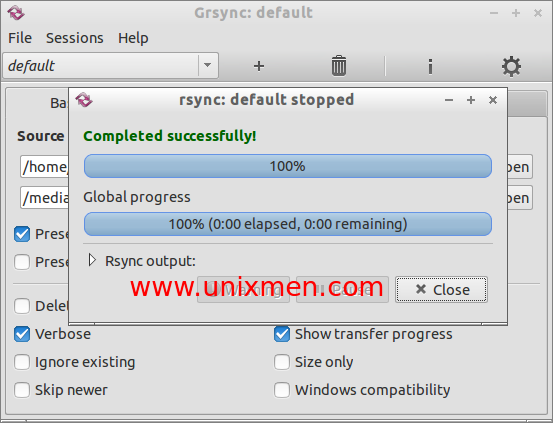

P – this switch combines -progress and -partial, so use it instead and it will make your rsync command a little neater. When transferring large files over the internet (say, a couple of gigabytes), there’s nothing worse than having a few second internet outage, blue screen, or human error trip up your file transfer and having to start all over again. If rsync gets interrupted for any reason in the middle of a file transfer, the partially transferred file is kept in the destination directory and the transfer is resumed where it left off once the rsync command is executed again. Rsync -av -delete -e 'ssh -p 12345' /home/geek/files/ – This is another switch that is particularly useful when transferring large files over the internet. With big files, and especially transferring files over the internet, that is a big deal.īacking up your files to an external hard drive and then keeping the hard drive in the same location as your computer is a very bad idea, so let’s take a look at what it would require to start sending your files over the internet to another computer (one you’ve rented, a family member’s, etc).

However, if your other hard drive already has some of the files and just needs the updated versions plus the files that have been created since the last sync, this command is handy because it only sends the new data over to the hard drive. Pretty simple, and at that point there’s really no need to use rsync, since you could just drag and drop the files. Rsync -a /cygdrive/c/files/ /cygdrive/e/files/ Or, the way it would look on a Windows computer with Cygwin:
GRSYNC LOG PORTABLE
Let’s say you have a bunch of files that need backed up – who doesn’t these days? You plug in your portable hard drive so you can backup your computers files, and issue the following command:


 0 kommentar(er)
0 kommentar(er)
